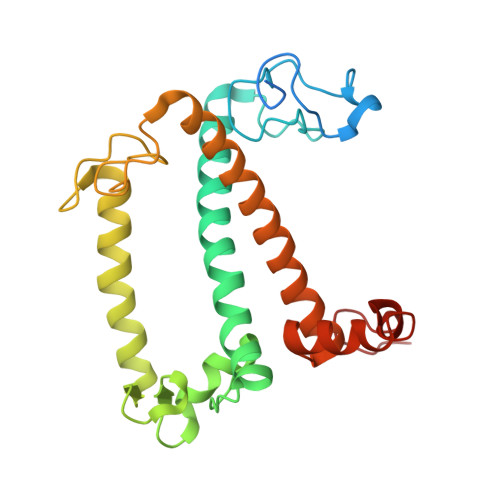Structural and functional properties of different types of siphonous LHCII trimers from an intertidal green alga Bryopsis corticulans.
Li, Z., Zhou, C., Zhao, S., Zhang, J., Liu, X., Sang, M., Qin, X., Yang, Y., Han, G., Kuang, T., Shen, J.R., Wang, W.(2023) Structure 31: 1247-1258.e3
- PubMed: 37633266
- DOI: https://doi.org/10.1016/j.str.2023.08.001
- Primary Citation of Related Structures:
8HLV, 8HPD, 8HQ8 - PubMed Abstract:
Light-harvesting complexes of photosystem II (LHCIIs) in green algae and plants are vital antenna apparatus for light harvesting, energy transfer, and photoprotection. Here we determined the structure of a siphonous-type LHCII trimer from the intertidal green alga Bryopsis corticulans by X-ray crystallography and cryo-electron microscopy (cryo-EM), and analyzed its functional properties by spectral analysis. The Bryopsis LHCII (Bry-LHCII) structures in both homotrimeric and heterotrimeric form show that green light-absorbing siphonaxanthin and siphonein occupied the sites of lutein and violaxanthin in plant LHCII, and two extra chlorophylls (Chls) b replaced Chls a. Binding of these pigments expands the blue-green light absorption of B. corticulans in the tidal zone. We observed differences between the Bry-LHCII homotrimer crystal and cryo-EM structures, and also between Bry-LHCII homotrimer and heterotrimer cryo-EM structures. These conformational changes may reflect the flexibility of Bry-LHCII, which may be required to adapt to light fluctuations from tidal rhythms.
- Photosynthesis Research Center, Key Laboratory of Photobiology, Institute of Botany, Chinese Academy of Sciences, Beijing 100093, China; University of Chinese Academy of Science, Yuquan Road, Shijingshan District, Beijing 100049, China.
Organizational Affiliation:


























